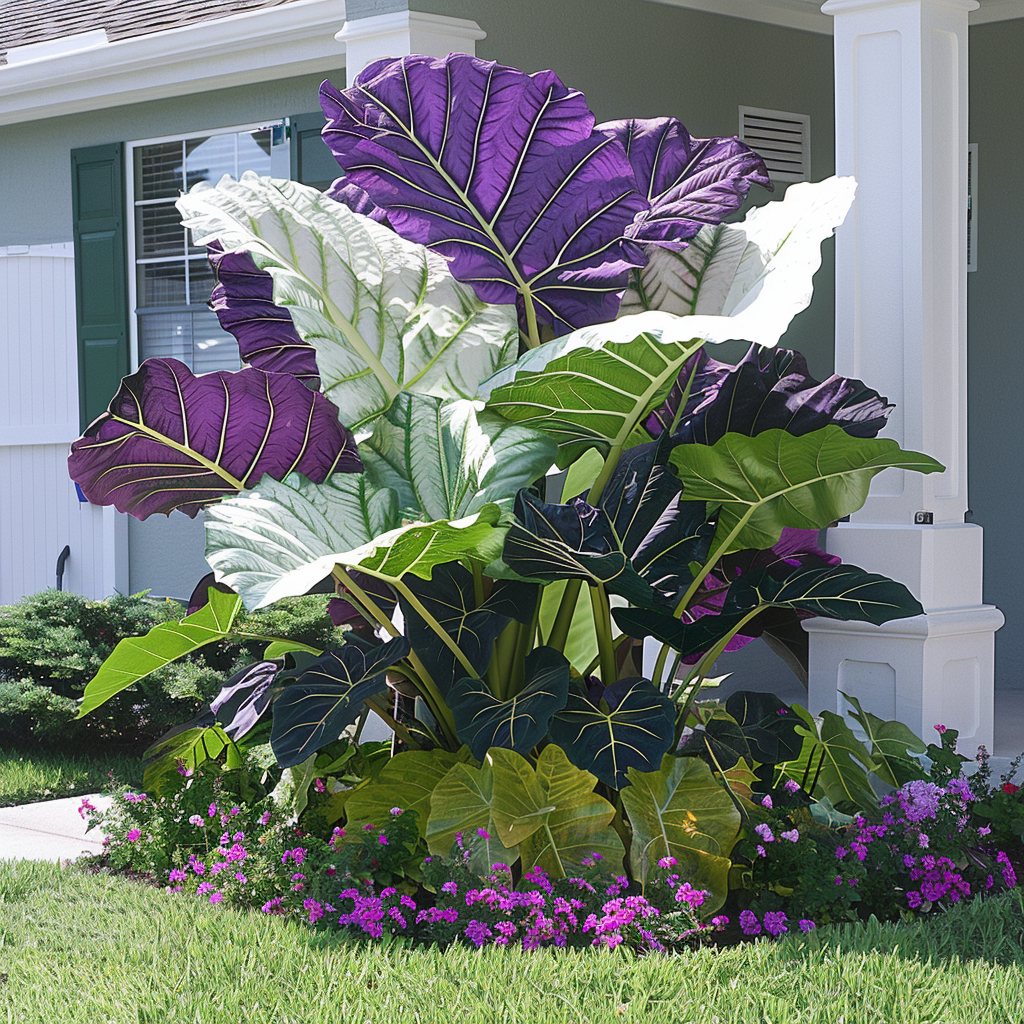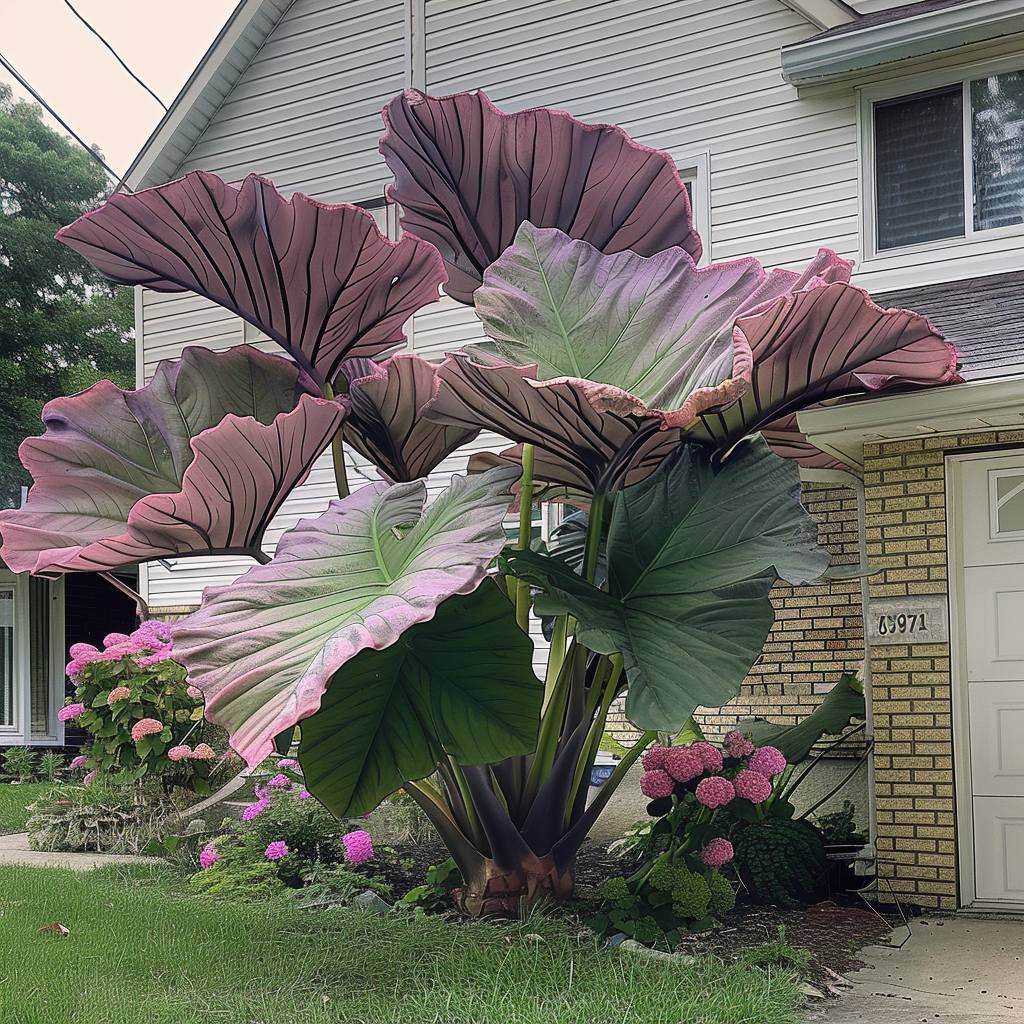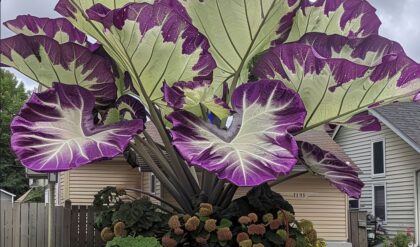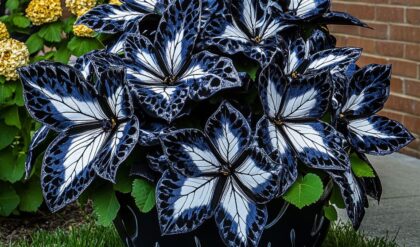How to grow and care for elephant ear plants? Find out tips to nurture this stunning tropical plant in this blog post.
Native to tropical and subtropical regions, the Elephant ear plants are popular for their unique appearance and low-maintenance requirements. They feature large, broad leaves that resemble the ears of an elephant, making them visually striking to any eye.
In this blog post, our editors have picked out some necessary knowledge for those who own an elephant ears plant or plan to add one to their living space.

A brief of Elephant Ears plant
These stunning tropical plants come in various species and cultivars, but they all share similar characteristics such as low maintenance, frost-intolerant, and thriving in indirect light.
There’s a reason that the elephant ears plant is one of the most popular choices of houseplants. They bring numerous benefits to the space:
- Tropical Flair: Their stunning foliage, available in various colors, instantly adds a touch of the tropics to any space.
- Symbol of Harmony: In Feng Shui, elephant ears represent the Wood element, symbolizing growth, renewal, and positive energy (chi).
- Clean Air Champions: These natural air purifiers help remove toxins like formaldehyde, improving indoor air quality and boosting oxygen levels.
- Stress Relief Oasis: The lush green leaves create a calming sanctuary. Their vibrant colors and gentle movement can soothe the mind and reduce stress.

How to care for Elephant Ears plant
Light
Elephant ear plants thrive in bright, indirect light. When placed outdoors, they prefer partial shade or dappled sunlight, as direct sunlight can cause leaf burn. However, they should be put near a bright window to receive plenty of natural light indoors.
Soil
This stunning tropical plant prefers rich, humusy, and moist soil with a slightly acidic pH (between 5.5 and 7.0). Good drainage is also crucial, as excessive water may cause rotted roots.
Water
Remember, consistent moisture is key when it comes to watering elephant ear plants. If grown outdoors. they will need deep watering once or twice a week, depending on the climate and humidity levels. For indoor plants, consider checking the soil regularly and water whenever the top inch feels dry. During the hot summer months, you should water it daily or multiple times a day.

Temperature
Elephant ear plants thrive in warm temperatures, so remember to maintain an indoor temperature of at least 70°F. In addition, these plants are not frost-tolerant, so make sure to bring them inside and keep them warm during winter months.
Humidity
Being typical tropical plants, elephant ears enjoy high humidity. You can use a humidifier or place the plant near a water tray to increase humidity levels. Regularly misting the leaves is also recommended.
Fertilizer
To keep your elephant ears plant healthy, use a water-soluble, high-nitrogen fertilizer every two or three weeks during their growing season.
Pests
Though pest-resistant, elephant ear plants might sometimes suffer from aphids, mealybugs, and spider mites. Inspect your plant regularly and treat any infestations promptly with natural or organic pest control methods.

Elephant ears plant care in winter months
As a typical tropical plant, Elephant ears are relatively sensitive to cold climates, and you might take some notes to provide good care of them during this time:
- Dig up the plant and gently shake off any excess soil before the first frost
- Cut any dead or damaged leaves
- Trim the roots to about 3 inches in length
- Place the plant in a pot filled with well-draining soil
- Water thoroughly and place in a warm, lit area
- No repotting until the following spring when the plant begins to show signs of new growth
FAQs on how to grow and care for elephant ears plant
Q: Where should I plant my elephant ear?
Elephant ears prefer dappled sunlight or partial shade, so a patio, living room, dining room, or indoor hall would be a perfect place to put. In addition, their massive leaves and lush appearance will add to any place a touch of tropical rainforest.
Q: What kind of soil should I grow elephant ears in?
These tropical plants enjoy moist yet well-drained soil. You might need a good mix of potting soil and perlite or compost for extra drainage.
Q: How big will the elephant ears plant get?
Depending on the variety, elephant ears can grow up to 3 to 6 feet tall when fully matured.
Q: Can I grow elephant ears indoors?
Absolutely. But you might consider choosing a dwarf variety and making sure there is a place that receives enough indirect sunlight. Besides, elephant ears may not reach their full-size growth when potted indoors.
Q: Are elephant ears plant toxic?
Yes. When ingested, all parts of elephant ears plant are toxic to both humans and pets. So keep your eye if you have small children or curious little friends in your house.
Q: How often should I water my elephant ear?
Elephant ears love water and thrive in consistently moist soil. Water deeply when the top inch of soil feels dry. Avoid soggy conditions, as this can lead to root rot.
Q: Do they need fertilizer?
During the growing season (spring and summer), you can fertilize your elephant ear with a balanced liquid fertilizer every two to three weeks. Reduce or stop fertilizing in the fall and winter.
Elephant ear plants are a striking addition to any garden or indoor space, with their large, broad leaves and unique appearance. With proper care, these plants can thrive and add a touch of tropical beauty to your home.



